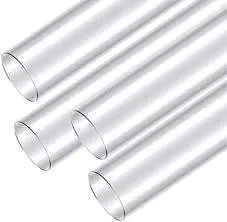Dec . 11, 2024 03:20 Back to list
HDPE Pipe Electrofusion Welding Techniques for Reliable Joint Connections
Electrofusion Welding of HDPE Pipes A Comprehensive Guide
High-Density Polyethylene (HDPE) pipes are widely recognized for their durability, chemical resistance, and flexibility, which make them the preferred choice for various applications, such as water supply, gas distribution, and sewage systems. One of the most effective methods employed in joining HDPE pipes is electrofusion welding, an advanced technique that ensures strong, permanent connections. In this article, we will delve into the principles of electrofusion welding, its advantages, challenges, and steps involved in the process.
What is Electrofusion Welding?
Electrofusion welding is a process that uses electrical energy to create a bond between two HDPE pipe ends. This method involves the use of electrofusion fittings, which are specially designed components installed on the ends of pipes. These fittings contain built-in heating elements that, when electrically activated, melt the surfaces of the HDPE pipes, allowing them to fuse together upon cooling.
Advantages of Electrofusion Welding
1. Strong and Durable Joints Electrofusion welding produces homogeneous joints with consistent strength, often exceeding the strength of the pipes themselves. This attribute is crucial for ensuring the longevity and reliability of pipeline systems.
2. Resistance to Environmental Factors The fused joints have superior resistance to environmental factors, such as temperature variations and chemical exposure. This makes HDPE pipes and their joints ideal for a variety of harsh conditions.
3. Versatility Electrofusion welding can be used on various pipe sizes and diameters, making it adaptable for different applications. The process can efficiently connect not only new installations but also repair existing pipelines.
4. Reduced Risk of Leaks The quality of the electrofusion weld minimizes the risk of leaks, reducing maintenance costs and ensuring safe transportation of fluids, gases, and other materials.
5. Ease of Use The process is relatively straightforward, requiring minimal skill training. Automated machines can facilitate the welding process, enhancing productivity and ensuring consistent results.
Challenges of Electrofusion Welding
Despite its advantages, electrofusion welding does present certain challenges
1. Initial Costs The equipment and fittings required for electrofusion welding can be expensive. However, the long-term benefits often outweigh these initial investments.
hdpe pipe electrofusion welding

3. Surface Preparation Proper surface preparation is critical for achieving strong joints. Contaminants on pipe surfaces must be removed, and the pipes must be correctly aligned for effective fusion.
4. Temperature Sensitivity The process can be sensitive to environmental temperatures, with extreme conditions potentially affecting joint quality. Therefore, careful monitoring is essential during the welding process.
The Electrofusion Welding Process
The electrofusion welding process generally involves the following steps
1. Preparation Start by cutting the HDPE pipes to the required lengths and ensuring the pipe ends are smooth and free of debris. The surfaces should be cleaned with a suitable solvent to remove any contaminants.
2. Fitting Installation Slide the electrofusion fitting onto the ends of the pipes to be joined. Ensure that it is securely placed and aligned.
3. Connection to Power Supply Attach the electrofusion machine to the fitting's electronic terminals. Ensure the machine is calibrated correctly for the specific size and type of fitting being used.
4. Welding Activate the electrofusion machine. The built-in heating elements will heat the fitting and the pipe surfaces, causing them to melt and fuse. The machine will control the heating cycle to prevent overheating and achieve optimal fusion.
5. Cooling Once the welding cycle is complete, allow the joint to cool undisturbed for the specified duration, ensuring maximum strength development.
6. Inspection After cooling, visually inspect the joint for any imperfections. Some standards may also require pressure testing to confirm the integrity of the weld.
Conclusion
Electrofusion welding is a reliable and effective method for joining HDPE pipes, providing numerous benefits over traditional welding techniques. While it presents some challenges related to costs and equipment requirements, the advantages in terms of joint strength, durability, and ease of use make it a preferred choice for many applications in the pipeline industry. With proper attention to detail and adherence to best practices, electrofusion welding can significantly enhance the performance of HDPE piping systems, ensuring their longevity and efficiency in various operational environments.
-
HDPE Natural Sheet: Durable, Food-Grade & Versatile Plastic Solutions
NewsAug.27,2025
-
Durable Glossy PVC Rigid Sheet | Premium High-Shine Panels
NewsAug.26,2025
-
Durable PP Rigid Sheet: Lightweight, Chemical Resistant Solutions
NewsAug.21,2025
-
PVC Grey Sheet for Extraction: Chemical Resistant & Durable
NewsAug.19,2025
-
Durable PVC Pipe Fittings for Plumbing & Irrigation Needs
NewsAug.18,2025
-
HDPE Steel Belt Reinforced Spiral Corrugated Pipe | High Strength
NewsAug.17,2025

